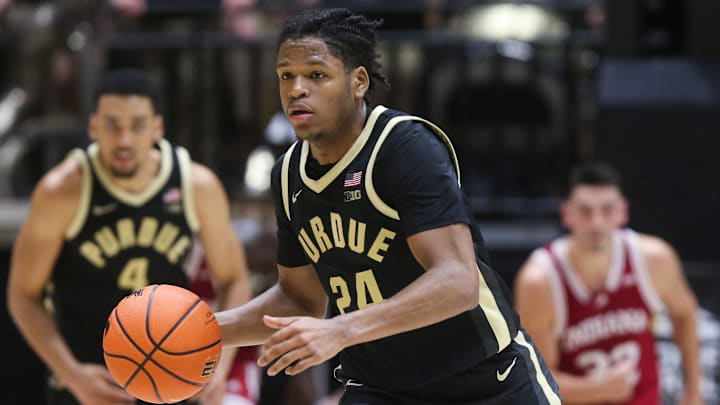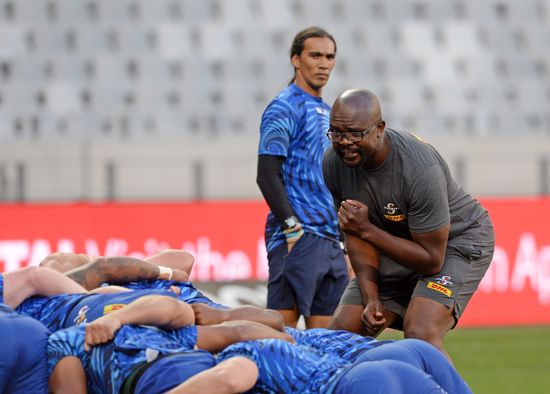As a true freshman, Gicarri Harris made waves on both ends of the court for Purdue. Now, as he gears up for his sophomore year, what’s next for his game?

During the offseason, Purdue Boilermakers on SI will showcase players from the 2025-26 Purdue men’s basketball team in a “Welcome Back/Welcome Aboard” series. This series will review highlights from the 2024-25 season and preview what’s to come in the next year.
Today’s spotlight is on sophomore guard Gicarri Harris, who started the season in the starting lineup before moving into a key role off the bench for the Boilermakers.
Gicarri Harris’s 2024-25 season
Harris started his freshman season as a starter for Purdue’s first five games. However, as coach Matt Painter adjusted the lineup, it was decided that the Atlanta native would be more effective coming off the bench to provide a spark.
Early on, Harris struggled with his shooting, particularly from beyond the arc. He made just five of his first 29 three-point attempts (17.2%) but began to find his rhythm as the season progressed. By the end of the year, he was shooting 31% from three-point range—an improvement, though still with room to grow.
Despite the shooting difficulties, Harris made an impact on games. Standing 6-foot-3 and weighing 200 pounds, he showed strong defensive effort around the perimeter and held his own against other guards in the league. He also helped Purdue by serving as an extra ball handler when opponents applied pressure, acting as a reliable outlet for Braden Smith when teams doubled the Big Ten Player of the Year.
Harris had some of his best performances late in the season. He scored nine points, grabbed three rebounds, and blocked a crucial shot in Purdue’s win over Indiana at Mackey Arena. On Senior Day, he posted a career-high 11 points in a 100-71 win against Rutgers. In the first two NCAA Tournament games, Harris contributed six points and pulled down 13 rebounds in victories over High Point and McNeese.
Though his freshman year began with some struggles, Harris adapted to the college game and finished strong, providing valuable energy off the bench for the Boilermakers.
Harris always embraced his role
Being moved from a starter to a bench role after just five games could feel like a tough blow for most freshmen. Harris may have felt similarly, but he never let those emotions affect his play on the court.
True to Purdue’s culture, Harris accepted and embraced his new role with the Boilermakers, understanding that his impact off the bench would ultimately benefit the team more than starting.
“Yeah, he’s a winner,” Painter said in November, speaking about Harris’s transition from starter to bench player. “He led his (high school) team to a state title last year, and sometimes he had to score a lot, sometimes he had to playmake, sometimes a little bit of both. He’s great. He was fine with it.”
It’s no secret that Painter targets players who prioritize winning and are willing to sacrifice individual glory for team success. Harris’s readiness to come off the bench is a clear example of that team-first mindset.
Harris still earned plenty of meaningful minutes, averaging 15.1 per game. He was even trusted to play late in games, helping Purdue maximize their chances to win.
A do-it-all guard
There’s an old saying: lies, damn lies, and statistics. If you judge Harris’s impact on Purdue solely by his stats, you might be a bit disappointed. The freshman averaged just 3.8 points and 1.9 rebounds per game, but his value went far beyond the numbers on the box score.
Harris showcased his versatility in Purdue’s win over North Carolina State at the Rady Children’s Invitational in late November. In that game, he recorded eight points, four rebounds, three assists, one block, and one steal across 20 minutes, helping the Boilermakers secure a 71-61 victory.
What Harris demonstrated during his first season in West Lafayette was his ability to contribute in multiple ways. He often served as an extra ball-handler to relieve pressure on Smith. Defensively, as a freshman, Harris was a reliable perimeter defender and contributed with solid rebounding from the backcourt, which helped compensate for Purdue’s occasional size disadvantages.
Offensively, Harris could knock down open three-pointers but also had the skill to drive to the basket. At times, he grabbed rebounds or caught outlet passes and pushed the tempo, aiming to catch defenses off guard.
As a freshman, Harris didn’t have a clear-cut specialty, but his ability to contribute across the board—especially with his ball-handling and defense—earned him valuable minutes on the floor.
Looking ahead to 2025-26
Like many of Harris’s teammates, the next step in his development is finding consistency. If he can improve his shooting percentage and become a bigger threat handling the ball, Purdue will benefit from better floor spacing during the 2025-26 season.
Beyond Smith, Harris may be one of Purdue’s best players at driving past defenders and attacking the rim. He showed flashes of that ability as a freshman, and it will be intriguing to see how that skill grows heading into his sophomore year.
While Purdue’s biggest struggles last season were rim protection and rebounding, their offensive shortcomings stemmed from a lack of playmaking off the dribble. Harris has the ball-handling skills and quickness to beat defenders off the bounce, plus the strength to finish through contact at the rim.
If Harris sharpens this part of his game, he has the potential to become a 10-point-per-game scorer next season. On a roster featuring Trey Kaufman-Renn, Braden Smith, Fletcher Loyer, CJ Cox, and Oscar Cluff, that would add even more firepower to Purdue’s already potent offense.
Gicarri Harris 2024-25 stats
Stats
- 3.8 points per game
- 1.9 rebounds per game
- 0.8 assists per game
- 39.1% FG
- 92.6% FT



